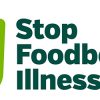Recent outbreaks of norovirus on cruise ships and in foodservice settings have highlighted the need for more stringent measures to prevent and mitigate the spread of foodborne illnesses. Cruise ships are particularly vulnerable to outbreaks of norovirus due to the large number of people in close quarters and the ease at which this virus spreads.
Norwegian Cruise Lines (NCL) began using hypochlorous acid (HOCL) during the coronavirus pandemic. HOCL is an effective method for eradicating many viruses and pathogens, including COVID-19 and the FDA’s reportable “Big 6” highly infective pathogens: Norovirus, the Hepatitis A virus, Salmonella Typhi, Shigella spp., Shiga toxin-producing E. coli and nontyphoidal Salmonella. According to the CDC’s website, NCL has not had a norovirus outbreak since their implementation of HOCL.
The increase in reported norovirus outbreaks, as revealed by CDC’s NoroStat data, underscores the escalating threat posed by this highly contagious virus. With 519 outbreaks recorded between August 1, 2023 and January 15, 2024 — a sharp rise from the previous year’s numbers — the need for proactive measures to curb its spread is evident. Similarly, the surge in Hepatitis A cases, a vaccine-preventable illness that has led to a concerning number of hospitalizations and fatalities, necessitates a closer look at preventive strategies in foodservice settings.
Salmonella, another common culprit in foodborne illness outbreaks, has recently affected hundreds, highlighting the need for more stringent food handling protocols. To mitigate the risk of outbreaks, food businesses should implement and train employees on:
Frequent Handwashing. Emphasize the importance of thorough, proper handwashing among employees to prevent the spread of contagious illnesses such as norovirus. Proper hand hygiene, especially after using the toilet and before handling food, is crucial in maintaining a safe environment. Remember that the purpose of alcohol-based hand sanitizers is to use them as an added precaution. They do not kill non-enveloped viruses such as norovirus.
Surface Sanitization. Implement rigorous sanitation and disinfection practices to reduce the risk of pathogen contamination. Regularly sanitize surfaces, equipment, and high-touch areas to maintain a hygienic environment. Items must be clean before they can be sanitized. It isn’t possible to sanitize dirt.
In addition to HOCL, quats (quaternary ammonium compounds) are approved sanitizers. They have been the food service industry “go to” for years and they are effective. However, research has linked quat exposure to health concerns including asthma, dermatitis, inflammation, infertility and birth defects. There are also concerns that they harm aquatic life and contribute to antimicrobial resistance. Another potential, often overlooked, concern is the issue of quat binding if these chemicals are not used correctly. When used with a cotton or rayon cloth to sanitize surfaces, a bond between the material and the quaternary ammonium is formed. This reduces the concentration of the sanitizer reaching the food contact surface. To reduce this risk, quats should be used with the manufacturer-recommended cleaning cloth.
Food irradiation utilizes ionizing radiation to treat food. It helps to prolong shelf life by reducing the presence of microorganisms and insects. Comparable to the pasteurization of milk and the canning of fruits and vegetables, irradiation contributes to the overall safety of food consumption. The FDA regulates the sources of radiation employed in food irradiation.
Proper Produce Handling. Wash and sanitize fruits and vegetables to eliminate contaminants and reduce the risk of foodborne pathogens such as listeria and salmonella. HOCL can be used as a “kill step” for these foods. Any food suspected of contamination must also be discarded to prevent outbreaks.
Safe Seafood Handling. Ensure that seafood, particularly shellfish, is cooked thoroughly to eliminate noroviruses that may be present. Adhering to proper cooking practices is also essential in safeguarding against foodborne pathogens.
Employee Health Policies. Prohibit sick employees from handling food to prevent the spread of illnesses. Encourage sick employees to stay home and adhere to strict return-to-work guidelines to safeguard against potential contamination.
Proper hygiene, cleaning and sanitation are of paramount importance in food businesses. Combining these protocols with emerging technologies, such as IoT and AI to monitor food products and identify and predict risks, is vital to navigating the challenges of food safety, and ensuring safe products.







